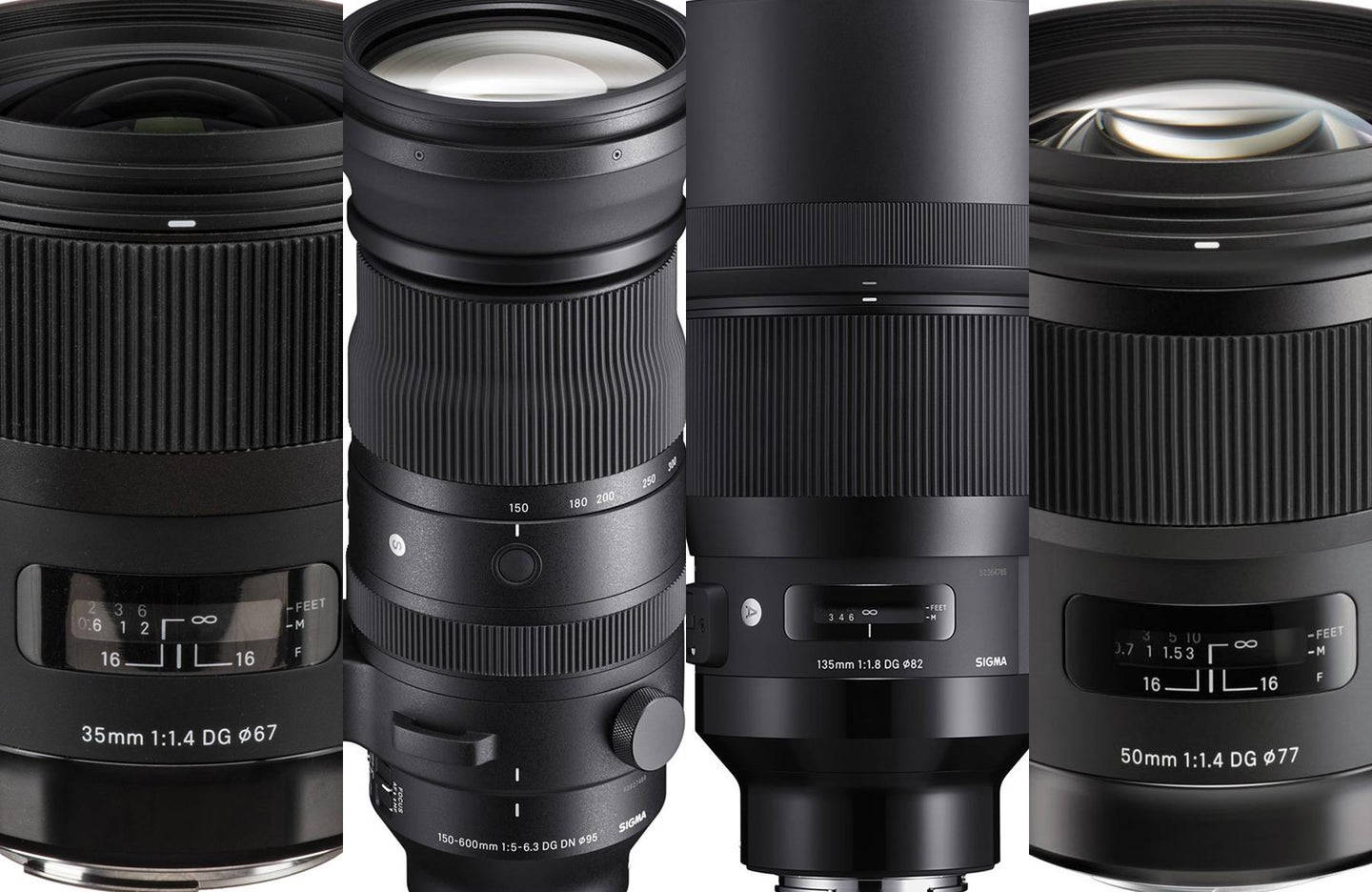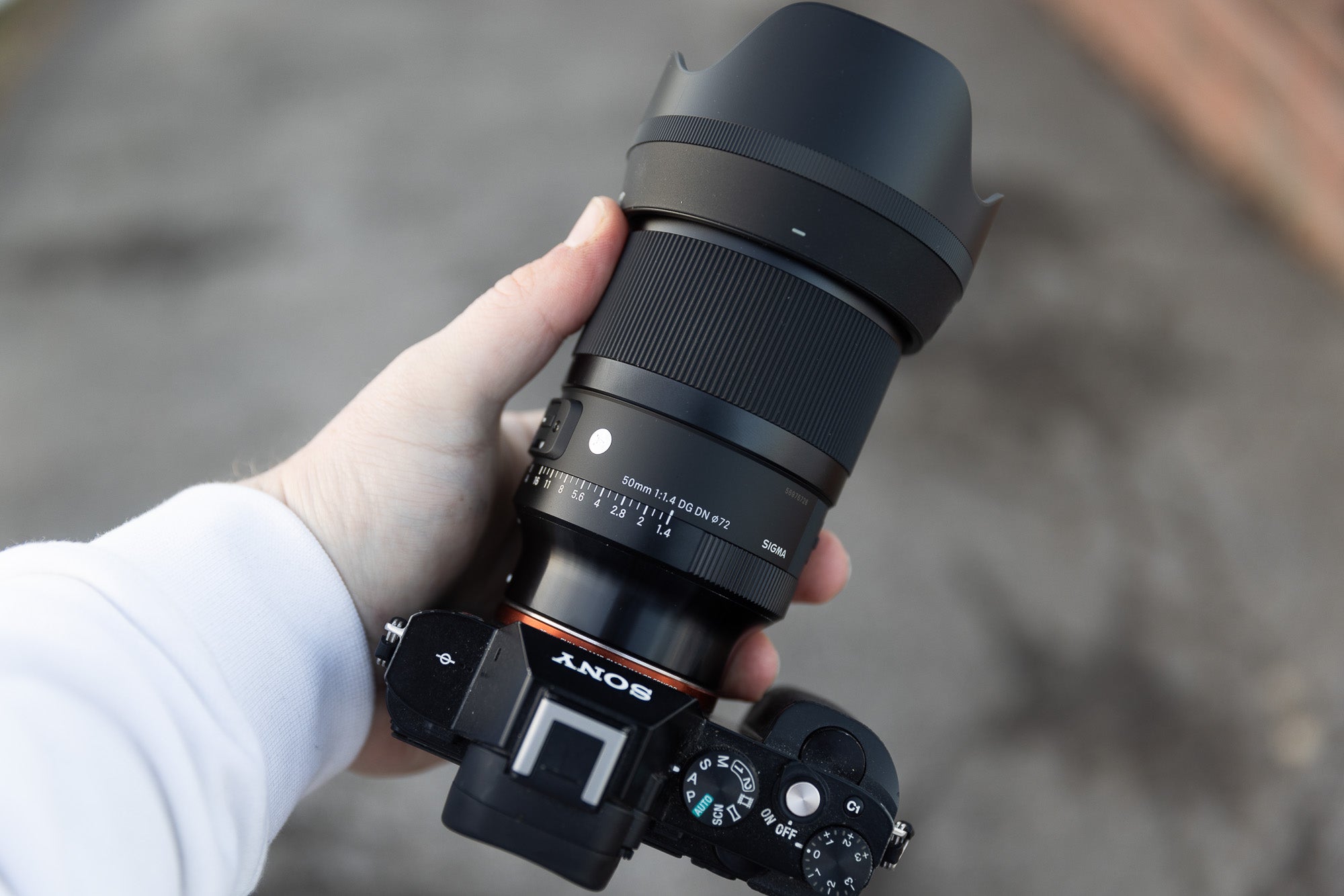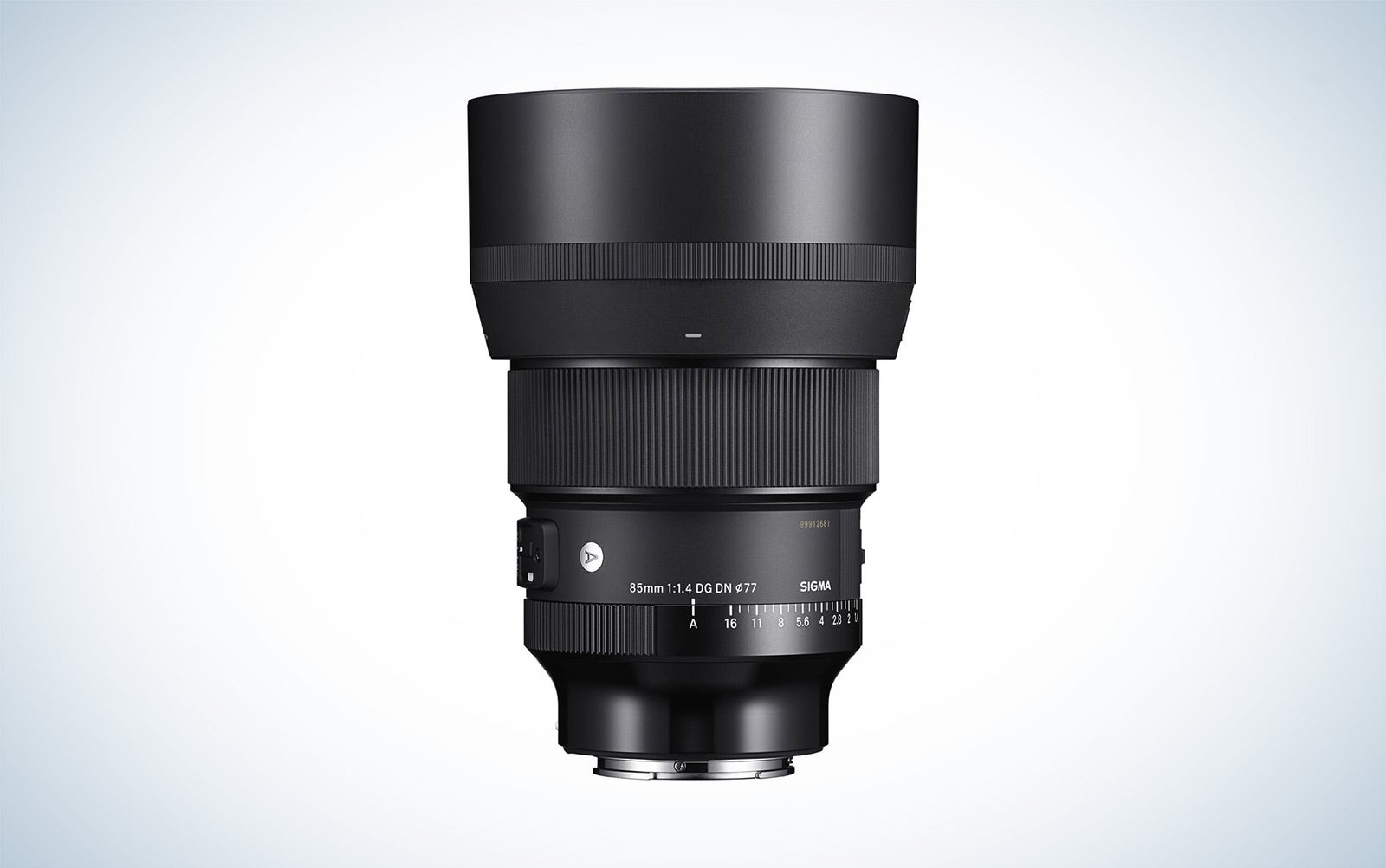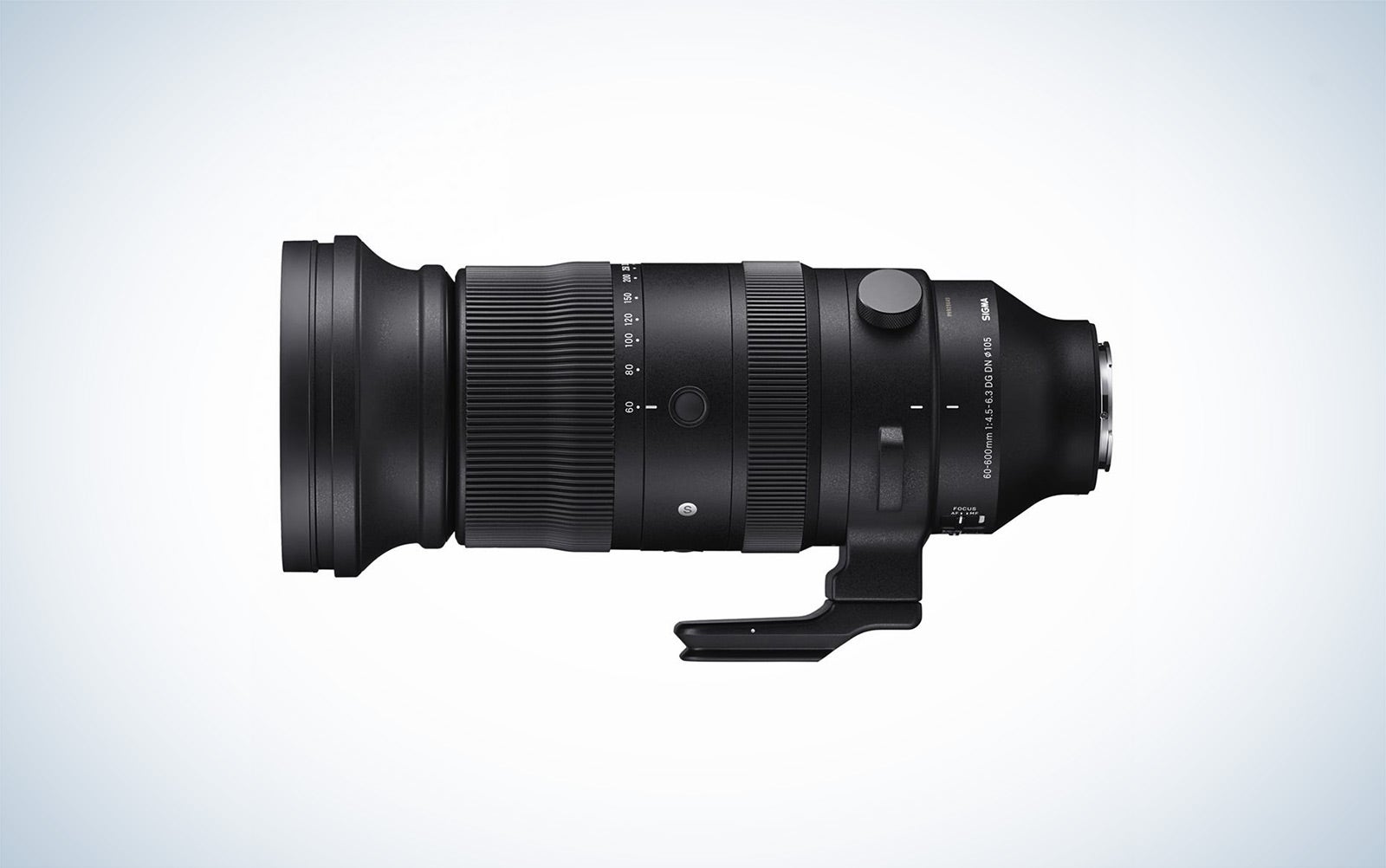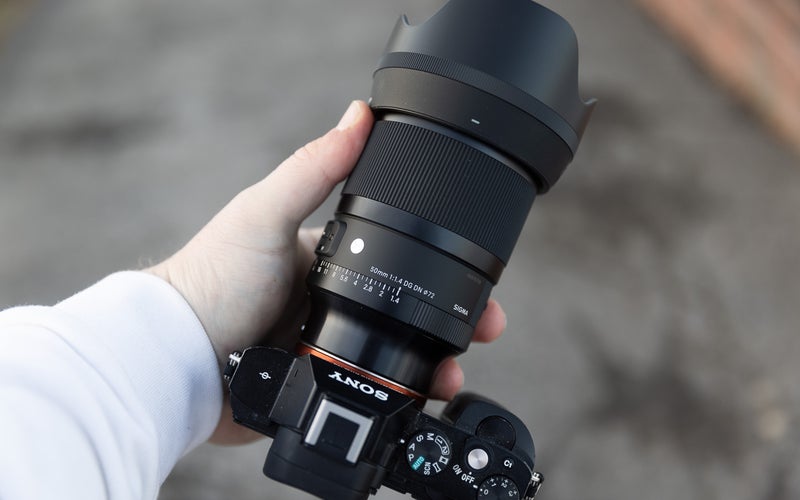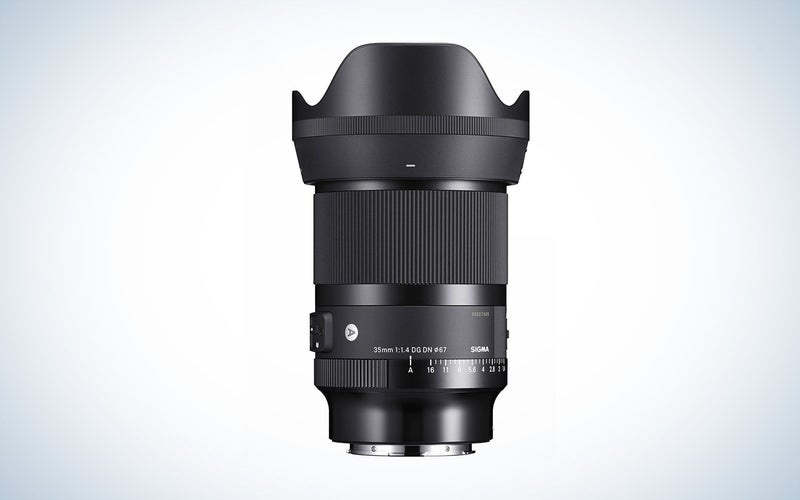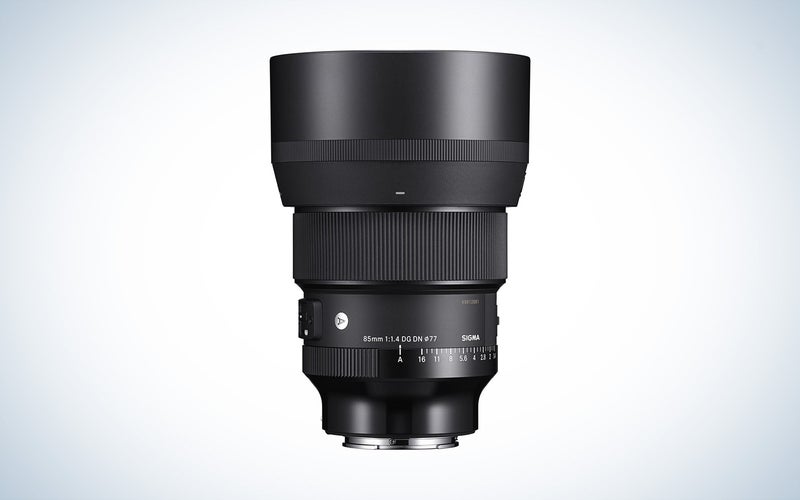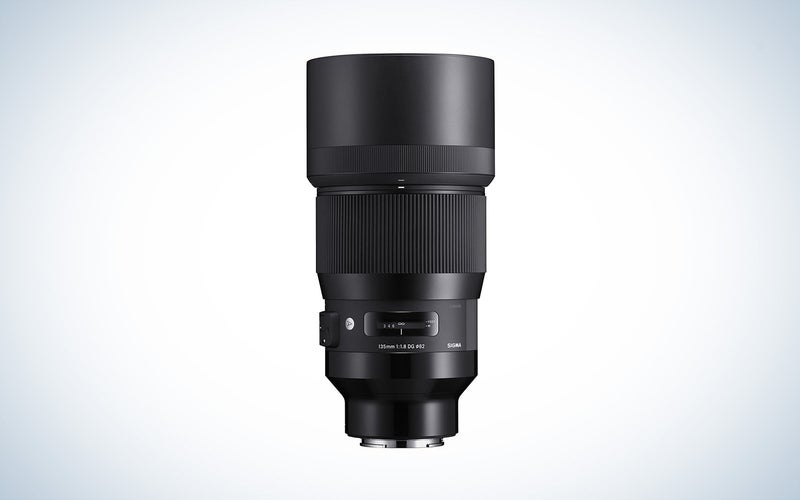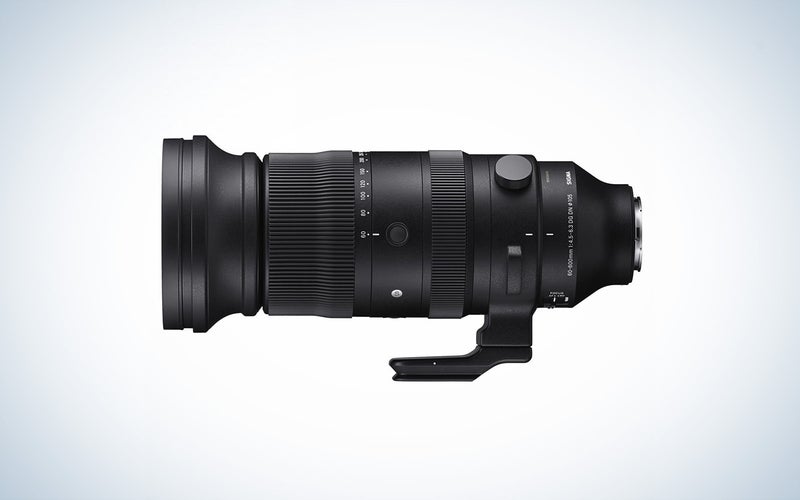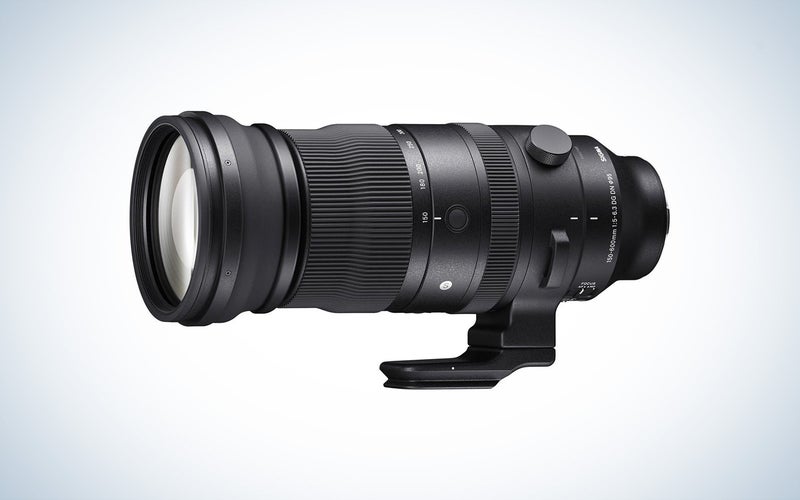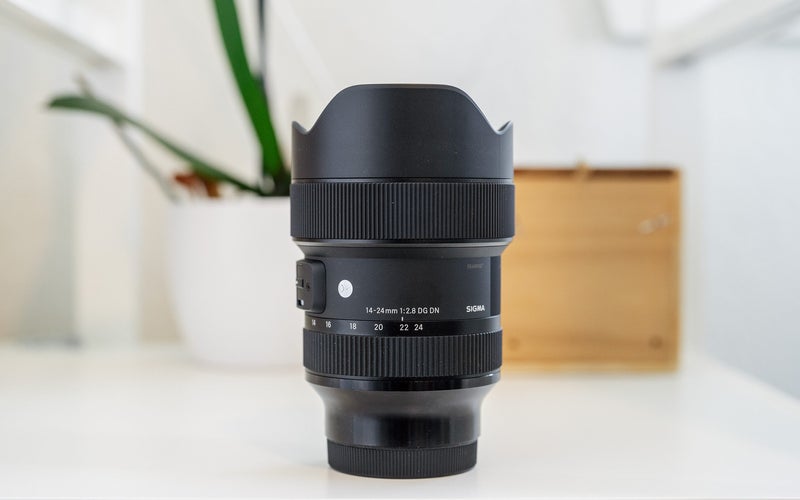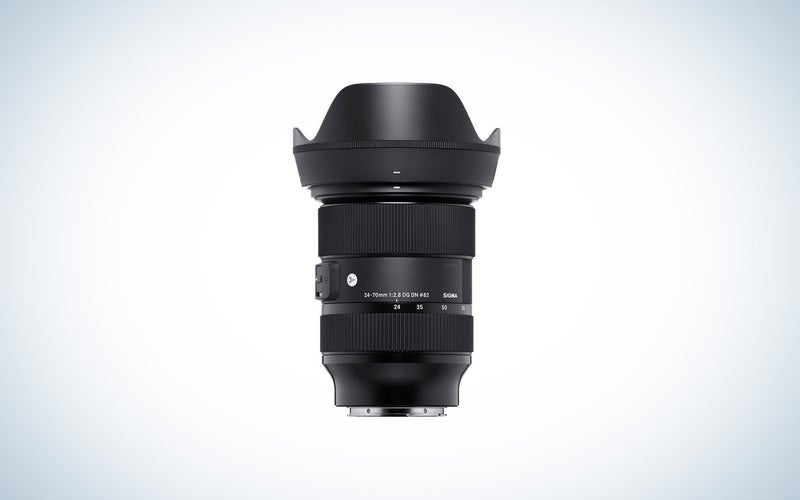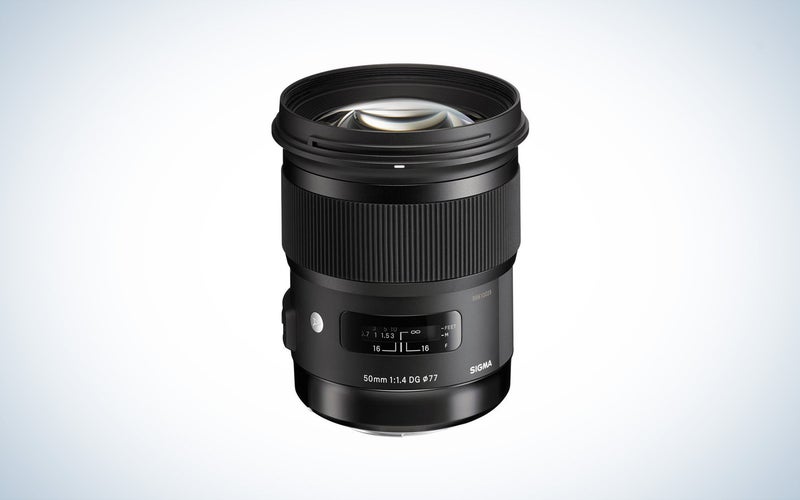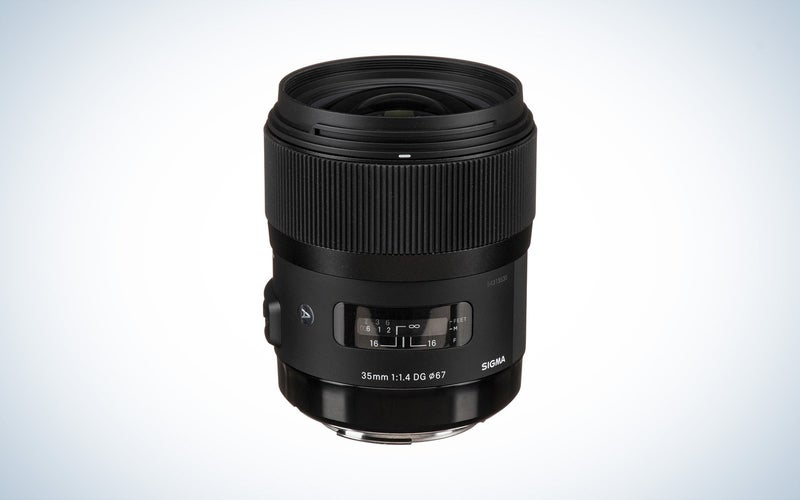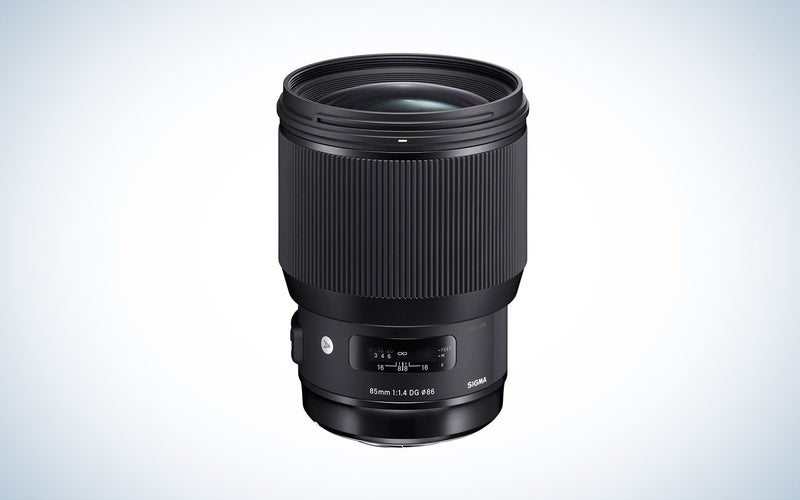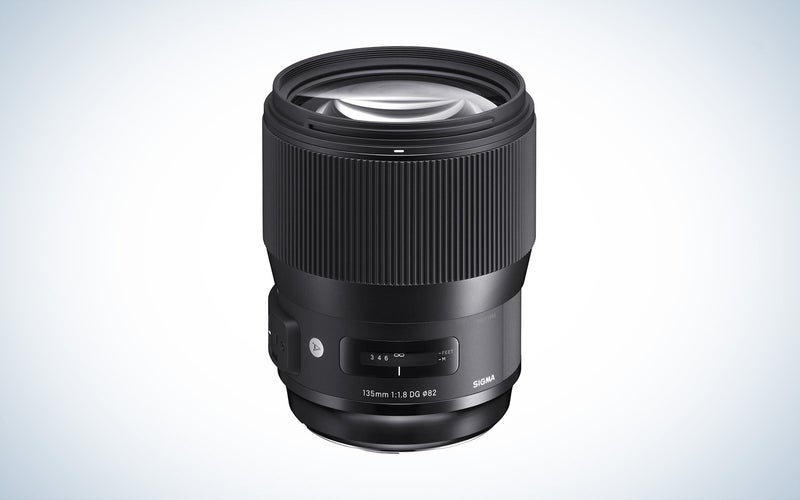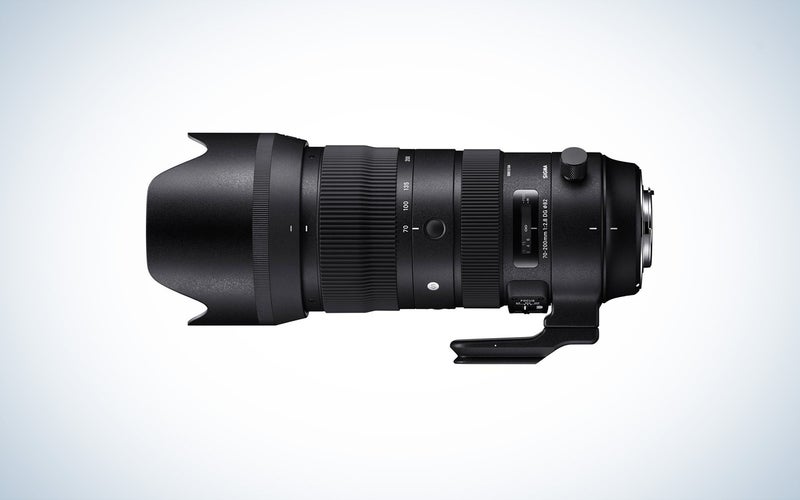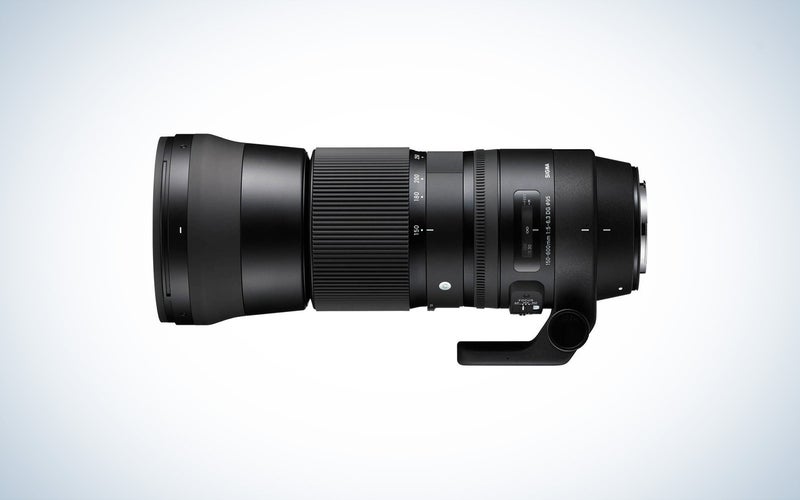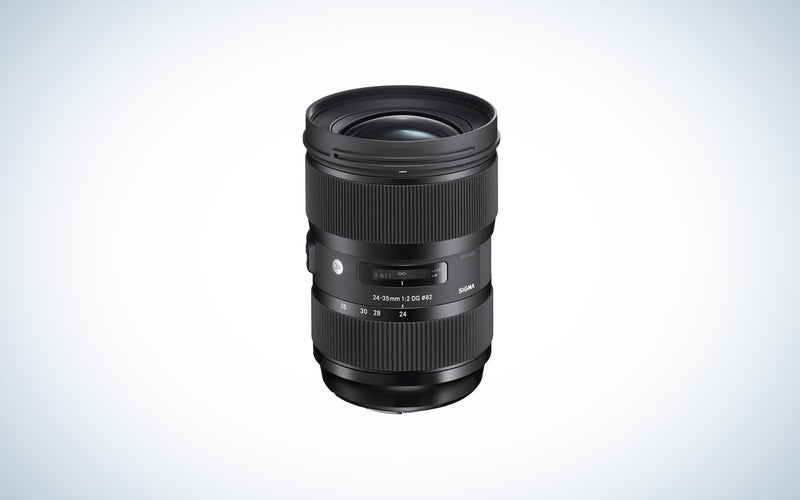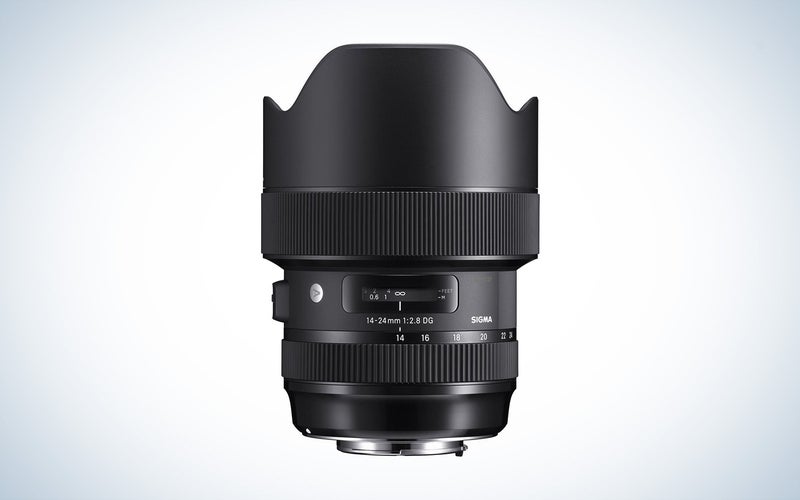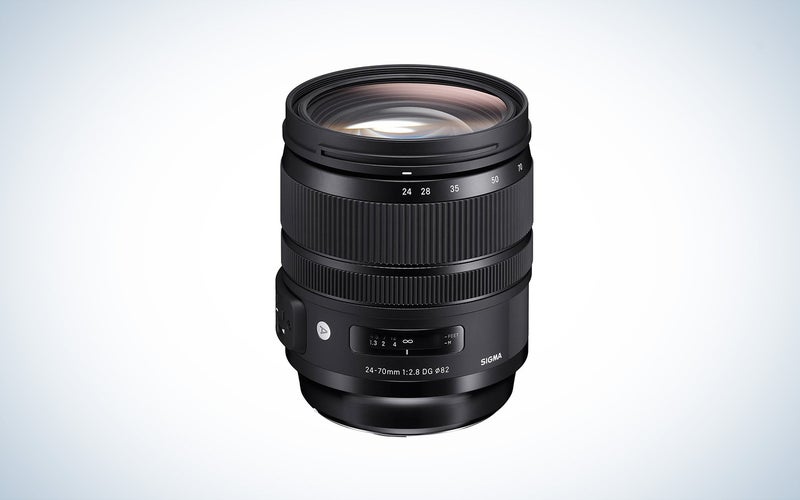We may earn revenue from the products available on this page and participate in affiliate programs. Learn more ›
Sigma lenses have been offering photographers and content creators alternatives to first-party lenses for decades. In that time, the company has built a reputation for high-quality, affordable glass that fills in gaps the big manufacturers often miss. Its Contemporary, Sports, and Art lines all offer something a little different, so no matter what your priorities are when shopping for a lens, you’ll find an excellent selection. And these lenses are reasonably priced despite providing a lot of quality, making them ideal choices for the budget-conscious photographer. The best Sigma lenses will help you get exceptional images, no matter what your preferred subject matter.
Mirrorless lenses:
- Best 50mm: Sigma 50mm f/1.4 DG DN Art
- Best 35mm: Sigma 35mm f/1.4 DG DN Art
- Best 85mm: Sigma 85mm f/1.4 DG DN Art
- Best telephoto prime: Sigma 135mm f/1.8 DG HSM Art
- Best telephoto zoom: Sigma 60-600mm f/4.5-6.3 DG DN OS Sports
- Best super telephoto zoom: Sigma 150-600mm f/5-6.3 DG DN OS Sports
- Best wide-angle zoom: Sigma 14-24mm f/2.8 DG DN Art
- Best standard zoom: Sigma 24-70mm F2.8 DG DN Art
DSLR lenses:
- Best 50mm: Sigma 50mm f/1.4 DG HSM Art
- Best 35mm: Sigma 35mm f/1.4 DG HSM Art
- Best 85mm: Sigma 85mm f/1.4 DG HSM Art
- Best telephoto prime: Sigma 135mm f/1.8 DG HSM Art
- Best telephoto zoom: Sigma 70-200mm f/2.8 DG OS HSM Sports
- Best super telephoto zoom: Sigma 150-600mm f/5-6.3 DG OS HSM Sports
- Best wide-angle zoom: Sigma 24-35mm f/2 DG HSM Art
- Best ultra-wide-angle zoom: Sigma 14-24mm f/2.8 DG HSM Art
- Best standard zoom: Sigma 24-70mm f/2.8 DG OS HSM Art
How we picked the best Sigma lenses
We considered a range of characteristics when selecting the Sigma lenses included in this guide. Image quality was one of the foremost factors, which includes aspects such as sharpness, distortion, aberrations, and more. We assessed features such as image stabilization, lens controls, and weatherproofing. We also looked at important specs such as aperture range, dimensions, and weight. And lastly, given that Sigma makes lenses for many different lens mounts and at different price points, we aimed to choose lenses for various camera systems and budgets.
The best mirrorless Sigma lenses: Reviews & recommendations
Sigma currently makes mirrorless lenses primarily for Sony E-mount and Leica L-mount, both in full-frame and APS-C formats. It has also begun making lenses for Nikon, though thus far, that only includes three prime APS-C lenses. The lenses below are all designed for full-frame cameras but will work on APS-C bodies, albeit with a cropped view.
Best 50mm: Sigma 50mm f/1.4 DG DN Art
Stan Horaczek
Lens mounts: Sony E, Leica L
A quality 50mm is something we recommend every photographer have in their kit, and this Sigma 50mm fits the bill. It offers a fast f/1.4 aperture and is sharp even when shooting wide open. It results in excellent colors and contrast as well. The lens body features plenty of controls, including an aperture ring and a customizable AFL button. And it’s dust- and splash-resistant with a protective coating on the front element to keep the lens safe and clean.
Best 35mm: Sigma AF 35mm f/1.4 DG DN Art
Sigma
Lens mounts: Sony E, Leica L
Sigma’s newest 35mm offering offers a fantastic balance of bright aperture, excellent image quality, size, and price. That’s especially true when compared to the Sigma 35mm f/1.2 lens, which is very bulky. The f/1.4 version still offers a lot of resolution and quality, but is nearly a pound lighter and $500 cheaper. And as an Art lens, it provides beautiful bokeh and a rugged build.
Best 85mm: Sigma 85mm f/1.4 DG DN Art
Sigma
Lens mounts: Sony E, Leica L
Sigma’s 85mm f/1.4 is a portrait photographer’s dream lens, especially if you don’t want to drop the cash on the Sony 85mm f/1.4 GM. It offers a fast and bright f/1.4 max aperture, incredibly sharp optics, and beautiful bokeh. Its autofocus is fast and essentially silent, and it offers plenty of controls on the lens body for easier use. And it’s smaller and lighter than Sony’s version as well, making it easier to carry around for a day of shooting.
Best telephoto prime: Sigma 135mm f/1.8 DG HSM Art
Sigma
Lens mounts: Sony E, Leica L
If you want a bit more reach for your portraits, the Sigma 135mm f/1.8 is an absolutely fantastic lens. It offers exceptional sharpness for high-resolution images and stunning bokeh. You’ll be able to get some dramatic portraits with this one. And as an Art lens, it boasts a durable build, so you can use it confidently even in less-than-ideal conditions.
Best telephoto zoom: Sigma 60-600mm f/4.5-6.3 DG DN OS Sports
Sigma
Lens mounts: Sony E, Leica L
The 60-600mm lens is a new offering from Sigma and is quite the beast of a lens. It offers a whopping 10x zoom, covering everything from the standard range to super telephoto. As a result, it’s useful for all sorts of wildlife encounters, even when the animals get quite close. At 5.5 pounds, it is a large lens, but it’s equipped with six stops of vibration reduction at the long end (and seven when zoomed out) to help with hand-holding even when using slower shutter speeds. It can focus quickly and accurately and provides sharp, highly detailed images.
Best super telephoto zoom: Sigma 150-600mm f/5-6.3 DG DN OS Sports
Sigma
Lens mounts: Sony E, Leica L
While the lens above extends into super telephoto territory, some may want a dedicated super telephoto zoom lens. The Sigma 150-600mm is a fantastic choice and will save you a pound in weight when compared to the 60-600mm. It still offers excellent image quality and sharpness, as well as very fast autofocus for capturing animals in motion. It provides four stops of shake reduction for sharper images. And it’s dust and splash resistant, so you can capture sports and wildlife no matter what the weather.
Best wide-angle zoom: Sigma 14-24mm f/2.8 DG DN Art
Sigma
Lens mounts: Sony E, Leica L
A fast ultra-wide angle lens is a fun way to add a unique perspective to your photos. It’s also a useful tool for landscapes, astrophotography, and real estate. And this Sigma 14-24mm is an excellent choice. I’ve been shooting with this lens for a while and adore it. It’s incredibly sharp, is capable of lovely bokeh, and is silent and fast when autofocusing. It’s a workhorse of a lens for wide-angle lovers.
Best standard zoom: Sigma 24-70mm F2.8 DG DN Art
Sigma
Lens mounts: Sony E, Leica L
A quality 24-70mm lens is hard to beat in terms of versatility, and Sigma’s offering is a great balance of quality and price. It is nice and sharp, focuses quickly and quietly, and features the typical Art lens rugged build qualities. It also provides beautiful bokeh, potentially even better than the Sony 24-70mm GM lens. And it can focus as close as seven inches, making it even more versatile.
The best DSLR Sigma lenses
Sigma has been making DSLR lenses much longer than mirrorless, and as a result, the list of available DSLR lenses is much longer than mirrorless. These lenses all offer a lot of quality for the price and could be used on mirrorless cameras with the right adapter.
Best 50mm: Sigma 50mm f/1.4 DG HSM Art
Sigma
Lens mounts: Canon EF, Nikon F
Though the older version of Sigma’s 50mm Art lens isn’t quite as sharp or high-contrast as the new Sony E-mount lens, it is still a worthwhile buy. It is plenty sharp for most uses, still offers the fast f/1.4 aperture, and still results in beautiful bokeh. It’s also smaller than the new lens, so if you really want to save some weight and space in your bag, this may be the way to go.
Best 35mm: Sigma 35mm f/1.4 DG HSM Art
Sigma
Lens mounts: Canon EF, Nikon F, Sigma SA
Sigma’s 35mm f/1.4 Art is perhaps the best 35mm lens for DSLR cameras, even when compared to the equivalent lenses from Canon and Nikon. It is exceptionally sharp across the entire image, even when wide open. It offers attractive bokeh, and minimal distortion, especially for a 35mm lens. And its autofocus is fast and accurate, with smooth manual focus to boot. It’s an all-around fantastic lens.
Best 85mm: Sigma 85mm f/1.4 DG HSM Art
Sigma
Lens mounts: Canon EF, Nikon F
The Sigma 85mm f/1.4 DG HSM cameras is one of the sharpest 85mm lenses available for DSLRs, making this a top choice for those who want high-resolution portraits or tighter landscape shots. And it has minimal vignetting, which is a common issue with this focal length. The autofocus is quick and more accurate than past Art lenses. The downside is that it’s a large lens (2.5 pounds and 3.7 x 5.0 inches). But Sigma packed a lot of quality into it, making it worth the weight.
Best telephoto prime: Sigma 135mm f/1.8 DG HSM Art
Sigma
Lens mounts: Canon EF, Nikon F, Sigma SA
To continue the trend of sharp lenses, Sigma’s 135mm for Canon EF, Nikon F, and Sigma SA is an exceptionally sharp telephoto lens across the entire image. Paired with a high-resolution camera, this lens will offer some highly detailed results. It also has essentially no distortion and results in stunning background blur. Plus, there’s a focus limiter switch to help with autofocus when you know where your subject will be.
Best telephoto zoom: Sigma 70-200mm f/2.8 DG OS HSM Sports
Sigma
Lens mounts: Canon EF, Nikon F, Sigma SA
70-200mm is an extremely versatile focal length, and Sigma’s take on this range is a great one. It utilizes internal zoom, which is especially useful when shooting on a tripod as the balance won’t be thrown off. It is dust- and weather-sealed so you can keep shooting no matter what the weather. And it offers four stops of stabilization to help with sharper results.
Best super telephoto zoom: Sigma 150-600mm f/5-6.3 DG OS HSM Sports
Sigma
Lens mounts: Canon EF, Nikon F, Sigma SA
This ultra-telephoto offers pro-level optics and features at a very reasonable price. The build quality is right on par with Canon’s professional lenses, meaning it will withstand some far-from-ideal conditions. It provides lots of on-lens controls, including a switch for manual focus, autofocus, or full-time manual focus override and a focus limiter switch. And most importantly, it results in excellent image quality even when shooting wide open.
Best wide-angle zoom: Sigma 24-35mm f/2 DG HSM Art
Sigma
Lens mounts: Canon EF, Nikon F
24-35mm lenses are ideal choices for wedding photographers capturing group photos or broad reception shots, as well as landscape and astrophotographers. And Sigma’s 24-35mm has a lot to offer for the price. It is very sharp, with good contrast and great color. It can focus very quickly, so you will get more winning shots even with moving subjects. And it has minimal distortion, especially for a wide-angle lens. The Nikon F-mount version is a bit hard to come by these days, but you can find used versions that will save you some money.
Best ultra-wide-angle zoom: Sigma 14-24mm f/2.8 DG HSM Art
Sigma
Lens mounts: Canon EF, Nikon F, Sigma SA
For those wanting a more dramatic view than a wide-angle, this ultra-wide zoom hits the right notes. The ultra-wide perspective is fantastic for astrophotography, and the fast f/2.8 aperture lends itself to that genre even more. It also features a rounded nine-blade diaphragm, resulting in pleasing bokeh even when shooting at 14mm. It’s a heavy lens—2.65 pounds—but it is built with professionals in mind with weather-sealing and oil- and water-repellent coating on the front element.
Best standard zoom: Sigma 24-70mm f/2.8 DG OS HSM Art
Sigma
Lens mounts: Canon EF, Nikon F, Sigma SA
For those looking for a versatile standard zoom to keep on their DSLR camera, Sigma’s 24-70mm f/2.8 is an excellent choice, especially for the price. It provides a fast f/2.8 aperture and rounded nine-blade diaphragm for attractive out-of-focus backgrounds and better low-light performance. Though it lacks some sharpness on the edges when wide open, it’s overall nice and sharp with fast and accurate autofocus.
Things to consider before buying Sigma lenses
Camera system
Unfortunately, not all Sigma lenses are available for every mount. Third-party lens options are especially limited for mirrorless systems at the time being. Sigma has only just released its first lenses for Nikon Z-mount, and it has yet to build any lenses for Canon’s mirrorless RF-mount. So for now, if you are a Canon or Nikon mirrorless owner, you’ll either be stuck with DSLR versions of Sigma’s and an adapter, or you’ll just need to wait.
The good news (for some) is that Sigma is currently making plenty of mirrorless lenses for Sony E-mount and Leica L-mount. You’ll have full pick of a wide range of lenses including prime and zoom options across the full focal length spectrum.
Sigma Art, Contemporary, or Sport
Sigma produces three distinct lines of lenses: Art, Contemporary, and Sports. Each of these have slightly different focuses and purposes. Sigma explains that the Art line is focused on “sophisticated optical performance.” As the name implies, the Art lenses are intended to be used for creative expression. As such, this lineup includes fast maximum apertures and extremely sharp optics.
The Sports line is entirely made up of telephoto and super-telephoto lenses. Most are zoom, but there are a few prime telephoto lenses thrown in as well. The Sports lenses are, as the name suggests, intended for documenting action and sports and offer fast focusing. They also are highly customizable with numerous function buttons to make the lens ideal for your use.
Finally, the Contemporary lineup uses what Sigma says is, “the very latest technology.” As a result, the lenses are more compact than other Sigma lenses but still offer excellent optical quality and performance.
All three types of lenses have a lot to offer, so you can’t go wrong with any of them. It’s simply a matter of what your priorities in a lens are. If you want your kit to be compact and lightweight, the Contemporary line will be best for you. If you are a sports or wildlife photographer, then focus on something from the Sports line. And if you want exceptional image quality with a fast maximum aperture, choose an Art lens.
Prime or zoom
As with lenses from the likes of Canon, Sony, and Nikon, Sigma makes both prime and zoom lenses. So, one of your first considerations when buying a Sigma lens is which to invest in. They each have their advantages, and which is best largely comes down to personal preference and shooting style.
Prime lenses offer only one focal length, meaning you will need to physically move if you want a different perspective. Because they are more simple in terms of technology compared to zoom lenses, they are typically more affordable, offer wider maximum apertures, and better quality.
Zoom lenses will offer a range of focal lengths in one body. They can even offer a range of focal length types within one lens, such as the classic 24-70mm, which has both wide-angle and telephoto. This makes them more convenient and versatile and can keep you from needing to swap out lenses as frequently. But, they are typically pricier than prime lenses and have a slower maximum aperture. They can also be lower in image quality as well, especially budget zooms.
Size & weight
Unfortunately, Sigma’s lenses tend to be bulky and heavy. That’s especially true of its Art and Sports lineup. They are typically quite a bit heavier than their OEM counterparts from the likes of Canon, Nikon, and Sony. Sure, they offer a lot of sharpness and quality, but not everyone wants to mess with a large lens.
If you are focused on creating a light and compact kit, pay close attention to the lens specs to ensure you aren’t going to end up with something clunky that you have to lug around. Or, stick with the Contemporary lineup for something more compact.
FAQS
Q: Do professional photographers use Sigma lenses?
Yes, professionals use Sigma lenses. Sigma makes some extremely high-quality lenses, some offering even better sharpness and all-around image quality than OEM lenses. Plus, they typically offer a lot of bang for your buck, since they are priced lower than first-party lenses.
Q: What is the difference between Sigma Art and Sigma Contemporary?
Typically speaking, Art lenses will be bigger and heavier than Contemporary lenses. Art lenses also offer faster maximum apertures than Contemporary lenses. And finally, most Contemporary lenses are more affordable than Art lenses.
Q: Is Sigma a third-party lens?
Sigma is indeed a third-party lens manufacturer. Any lens made by a company other than the camera manufacturer, such as Nikon, Canon, or Sony, for example, is considered a third-party lens.
Q: Are Sigma lenses worth it?
Sigma lenses are absolutely worth your money. Sigma makes some fantastic and high-end lenses that are quite a bit more affordable than the OEM versions, giving you lots of value for your money.
Final thoughts on the best Sigma lenses
Mirrorless lenses:
- Best 50mm: Sigma 50mm f/1.4 DG DN Art
- Best 35mm: Sigma 35mm f/1.4 DG DN Art
- Best 85mm: Sigma 85mm f/1.4 DG DN Art
- Best telephoto prime: Sigma 135mm f/1.8 DG HSM Art
- Best telephoto zoom: Sigma 60-600mm f/4.5-6.3 DG DN OS Sports
- Best super telephoto zoom: Sigma 150-600mm f/5-6.3 DG DN OS Sports
- Best wide-angle zoom: Sigma 14-24mm f/2.8 DG DN Art
- Best standard zoom: Sigma 24-70mm F2.8 DG DN Art
DSLR lenses:
- Best 50mm: Sigma 50mm f/1.4 DG HSM Art
- Best 35mm: Sigma 35mm f/1.4 DG HSM Art
- Best 85mm: Sigma 85mm f/1.4 DG HSM Art
- Best telephoto prime: Sigma 135mm f/1.8 DG HSM Art
- Best telephoto zoom: Sigma 70-200mm f/2.8 DG OS HSM Sports
- Best super telephoto zoom: Sigma 150-600mm f/5-6.3 DG OS HSM Sports
- Best wide-angle zoom: Sigma 24-35mm f/2 DG HSM Art
- Best ultra-wide-angle zoom: Sigma 14-24mm f/2.8 DG HSM Art
- Best standard zoom: Sigma 24-70mm f/2.8 DG OS HSM Art
The best Sigma lens will entirely depend on your needs and what you will be using the lens for. Luckily Sigma makes an extremely wide range of high-quality lenses for different lens mounts, providing something for just about everyone. We’re eagerly waiting to see more mirrorless options for Nikon and Canon, but in the meantime, the Sony E-mount, Leica L-mount, or DSLR lenses offer a lot of value.
Why trust us
PopPhoto has a long history of delivering the opinions of some of the sharpest and most prolific camera dorks the world has to offer. Since 1937, we’ve been reviewing cameras, providing wisdom from well-known photographers, and generally just nerding out about all that goes into making great pictures. Our current crop of writers and editors have decades of professional photography and camera writing experience among them. Collectively, we’ve probably shot with just about every camera and lens combo you can imagine—as well as some obscure stuff you may not even know about. Remember the Casio Tryx folding camera? PopPhoto does.
We also get that buying a camera is a big decision, which is why we’re dedicated to helping folks choose the right one (or, in our case “ones”) for their needs. Case in point: Handing over top dollar for an expensive rig may leave you unsatisfied if it doesn’t fit your preferred shooting style. Sure, a $6,000 sports-oriented DSLR can capture landscapes, but do you really need to do it at 30 frames-per-second? No, you don’t.
